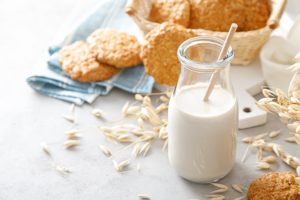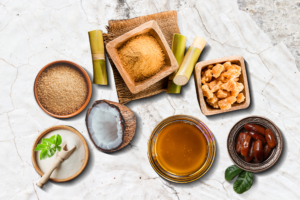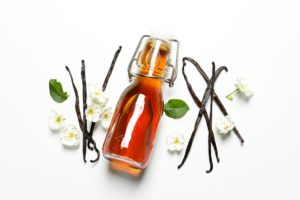Of course, in the culinary world, they’re plant-derived substances used sparsely to give dishes an edge. They can be whole, broken, ground, or dried—often the latter, with some also fresh. Besides their applications in food preparation, spices have constantly been used as preservatives due to their chemical compounds’ antimicrobial and antioxidant properties.
Rightly celebrated for their considerable benefits and uses, spices bear a legacy as old as time. They have been integral to culture for millennia, playing a vital role in the progression of individual cuisines within societies. Their impact on global trade and history is undeniable, and this blog will reveal the origin of spices, spice trade routes, their role and more.
The Ancient Spice Trade Routes
It’s impossible to describe spices and their origins without bringing up their spread through a complex set of sea routes known as the Spice Routes or the Maritime Silk Roads. Stretching across Europe and Asia and up to Japan, the arduous sea route helped introduce spices throughout the world and dispersed them to kitchens everywhere.
For a long time, ancient Arabia was a key trading centre for valuable materials like myrrh and frankincense, which were later expanded to include spices such as cinnamon and cassia. These spices entered the Middle East from Asia via the Spice Routes, with traders sometimes sailing directly to their origins. By the late 14th century, Venice had taken control of Middle Eastern trade. In response, explorers like Christopher Columbus sought new routes to spice regions. While not all were successful, several European expeditions in the 16th century to the Spice Islands proved fruitful, further connecting remote parts of the Asian subcontinent to the mainland and intersecting with links in the Middle East. This additionally facilitated the spread of spices westwards to Europe.
Role of Indian Spices in Indian Kitchens
India is synonymous with spice. It gives our food its distinct identity and is entrenched deeply in our extended culture, with the association going back centuries. And that relationship has only grown over time, supported by the fact that we are the global leader in spice production and exports.
In today’s kitchens, spices still whisper their ancient stories, bridging the gap between tradition and innovation—flavouring our dishes with a rich heritage that stretches back through the ages. Their use has evolved to account for leaps in food sciences and the complexity of dishes. Spices are fundamental in Indian home cooking—jars and containers of cumin, clove, cardamom, and black pepper are a staple in every household. It’s no different in commercial kitchens, either. Indian restaurants depend liberally on spices to achieve perfect flavour, hinging their success on the authenticity of their blends. In a saturated market, chefs are consistently experimenting with spices to formulate new flavour profiles and attract more diners. This experimentation also includes trends and innovations such as fusion cuisine, which transplants the Indian idea of spice into foreign dishes like burritos and burgers. Spices are also used creatively in restaurants focused on molecular gastronomy. And while spice-infused drinks have been around for aeons, they could gain further mainstream and commercial momentum.
Popular Spices Used in India

It’s obvious that spices are the underlying essence of Indian cooking. Despite boasting a wide diversity of culinary styles, spices are the common denominator when it comes to flavouring food in the country. Whether a spicy Goan vindaloo or some Delhi-style butter chicken, you require the proper spice blends to capture the dish’s soul. Symega’s range of seasonings manages precisely that. It combines classic and contemporary profiles curated by in-house spice specialists to provide unique blends that honour the essence of spices and their heritage while embracing both tradition and innovation.
Some of the popular spices in India are:
Asafoetida
A gum resin from the diverse carrot family is added to meals to highlight umami flavours. Also known as hing, it has a strong, pungent odour because of its organic sulphur compounds. By itself, it possesses a bitter, unpleasant taste; it’s commonly added in powdered form and is an ingredient in dishes like sambhar, vada pav, lemon rice, and pulihora.
Black Mustard
These tiny, pungent seeds are used in tempering a spice mixture usually. South Indian curries like sambhar are finished with a garnish of hot mustard seeds and curry leaves. This gives them a bit more heat and sharpness. They’re even added to chutneys, instantly offering more texture to otherwise plain mixtures. The seeds are also used in North Indian sabzis and dals.
Black Pepper
The ‘king of spices’ is widely employed in Indian dishes to kick flavour profiles up a notch thanks to its potent, penetrating odour and intense taste (a result of the compound piperine). You can find it in several spice blends, curries, chutneys, marinades, soups, pickles, gravies, and nearly every other savoury recipe conceived.
Cardamom
This plant comes from good stock—it hails from the ginger family and features in jalebis, chais, and many Mughlai preparations. Two related varieties exist: black and green cardamom. Cardamom pods are used whole in some dishes. More frequently, it’s the seeds inside that flavour savouries, desserts, and beverages. Cardamom seeds are very aromatic and slightly zesty with a hint of lemon; the green variety is milder.
Chilli Pepper
Chillis—as red powders, flakes, paste, or whole—are universal in most Indian cooking, acting as both spicing and colouring agents. Over a hundred types of chillis with different heat levels, such as Guntur chilli and Kashmiri chilli, are used across the country. Famously, Andhra cuisine is typically heavy on this spice, incorporating it in every meal.
Cinnamon
Cinnamon earns its place on kitchen shelves for its sweet, earthy tones and soothing aroma that give dishes complexity. It acts as a warming spice in savouries, with the bark slowly releasing its flavours and making it ideal for long-cook recipes. Elsewhere, powdered cinnamon is used mainly in desserts and baked goods.
Cloves
Rich in essential oil, cloves are very aromatic and pungent. Their characteristic warmth lends depth to various meat dishes in India. They can additionally form part of the spice base in complex dishes like biryanis or single handedly flavour more basic pulaos on their own.
Coriander powder
A principal Indian spice that’s either ground-up seeds or powder, it is the foundation for uncountable curries, vegetable dishes, and masalas. What it lacks in outright heat, it makes up for with warm nuttiness. It’s widely versatile and used in different phases of cooking, whether in tempering to open flavours or adding woody notes to slow-cooked stews and pulaos.
Cumin
Another staple in Indian cooking, cumin seeds exhibit a strong aroma and warm taste. Indian cooking highlights the flavonoid-rich spice in various ways, as part of ‘jeera’ appetisers or main courses. As a powder, you’ll notice it in different contexts, from finishing soups and stir-fries to being the star of spicy gravies, besides being used in chaats and salads for a tangy finish.
Turmeric
No Indian kitchen is complete without this vibrantly coloured, versatile rhizome. The slightly warm, bitter spice has a peppery aroma and can colour food thanks to its staining properties. It serves a range of applications in Indian cooking, going from turmeric milk to being an active ingredient in gravies, fish dishes, dals preparations, and more.
Sources of Spices: Keeping the Legacy Alive

Spices are ubiquitous. They have been for ages. While their exact genesis as food items is difficult to pinpoint, their proliferation across continents through trade routes is well documented and a part of a culinary legend. Their global adoption has since shaped traditions, making them an essential part of culinary grammar. Spices like turmeric, chilli, black pepper, and cloves have undoubtedly enriched people’s foods and lives and have an influential role in Indian communities. As we continue to cherish these flavourful items and their integral function in food and beyond, it’s important to prioritise quality and sustainability in sourcing. A responsible outlook towards spices that is considerate of the environment will ensure their legacy continues for generations.
FAQs
While spices have spread globally, some remain linked with their native regions and heavily influence the local cuisine—for instance, turmeric is indigenous to India and Indonesia and is a massive part of the nations’ cuisines. Black pepper is from India’s west coast, clove possibly comes from Indonesia, coriander from the Middle East, and ginger is believed to be native to Southeast Asia.
Innovations in spice farming have significantly transformed the industry. For example, microwave drying preserves spices’ bioactive compounds better than traditional practices like sun drying. Techniques like precision agriculture are helping farmers optimise their harvests while minimising environmental impact. Furthermore, innovations now account for climatic and environmental drawbacks, helping produce certain spices in harsh, water-deficit regions. Meanwhile, advances in seed technology are also benefiting producers.
As with other plants, pests and diseases are always a threat besides climate variability. Depleting soil prosperity, spoiled water resources, and agrochemical usage are other universal issues that plague spice cultivation. A lack of access to innovation aiding planting, production, and harvesting further hampers farmers. Infrastructural challenges and market fluctuations are also issues cultivators have to contend with.
Temperature plays a role in the quality of spices like pepper plants. Deviations from optimal day and night conditions could lead to poor fruit sets. Cold weather can cause onions to bolt—and we don’t mean they grow limbs and flee the scene—while heat stress can also affect the yield of certain spices and possibly the level of volatile compounds.




